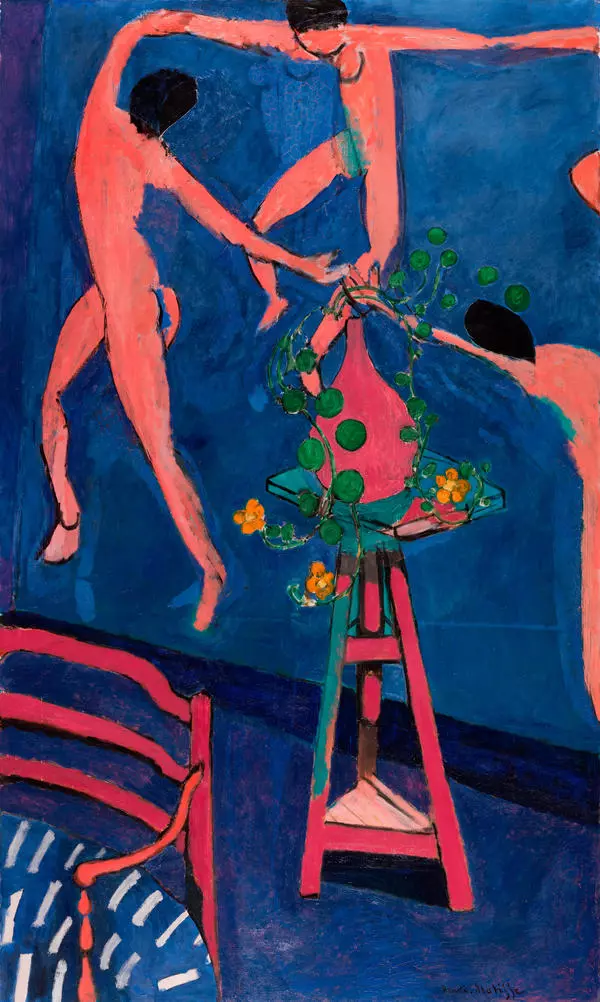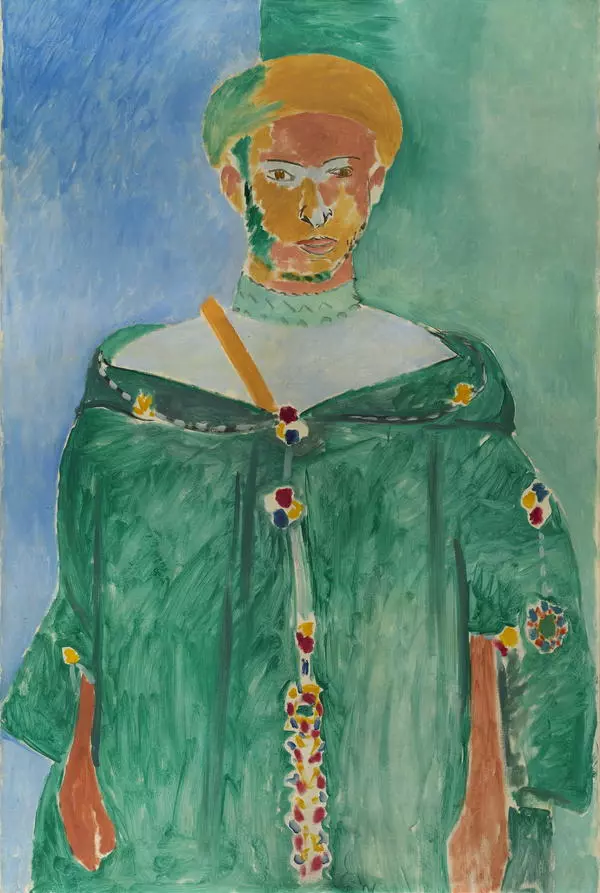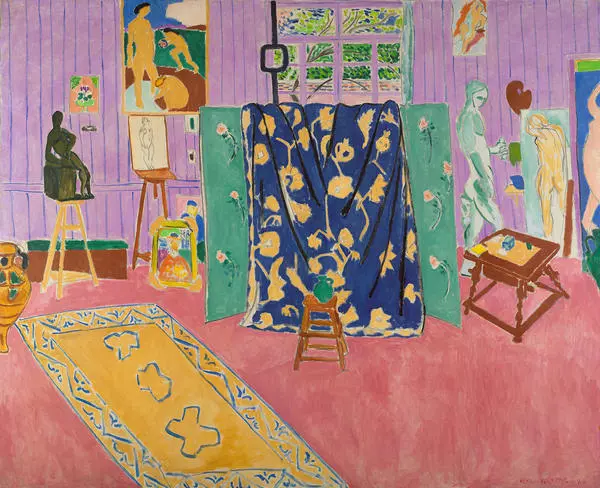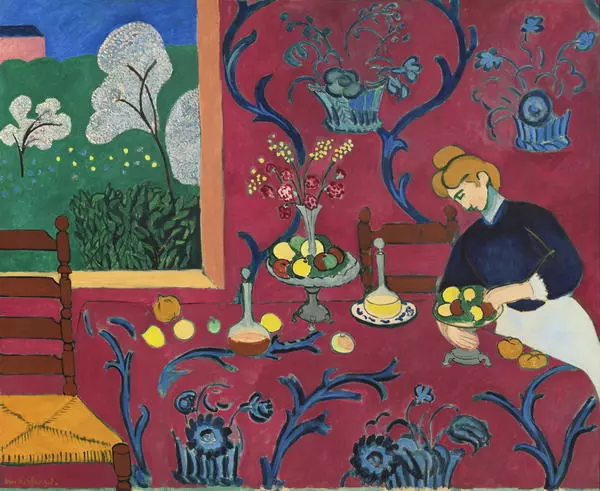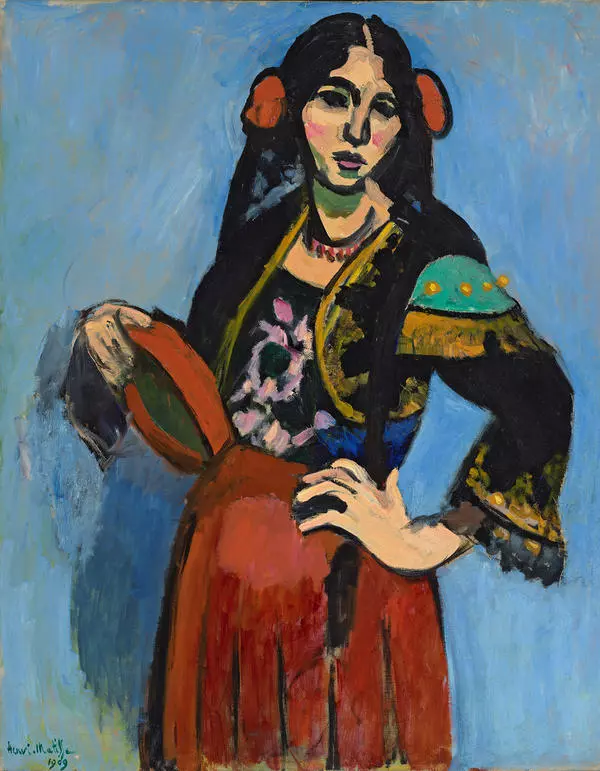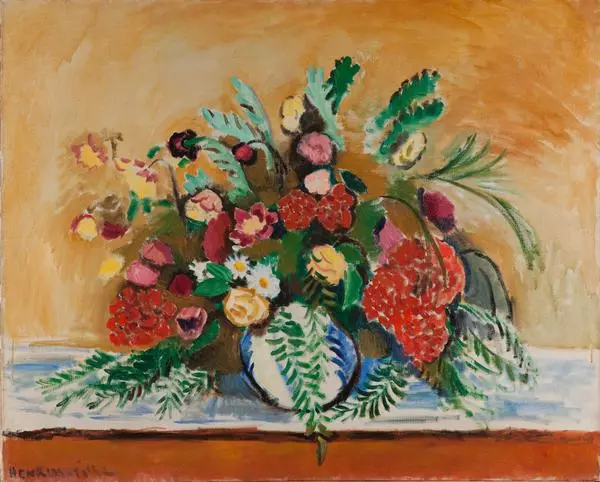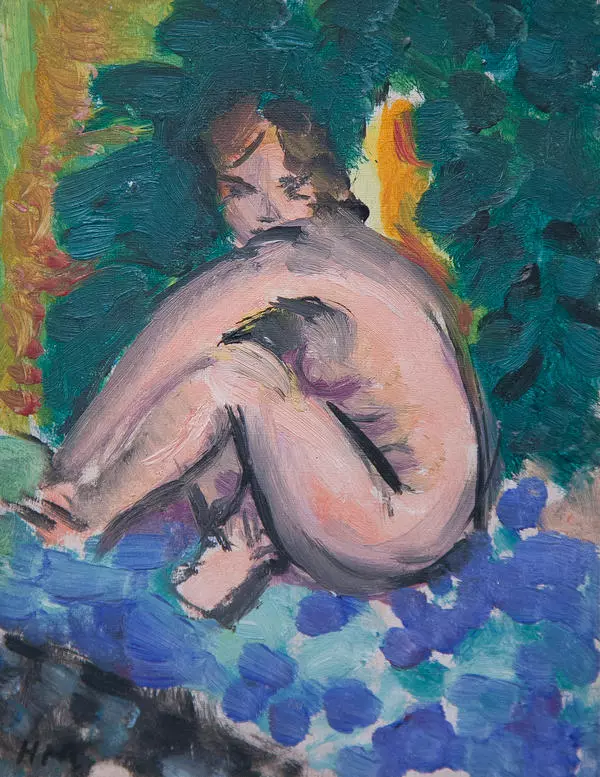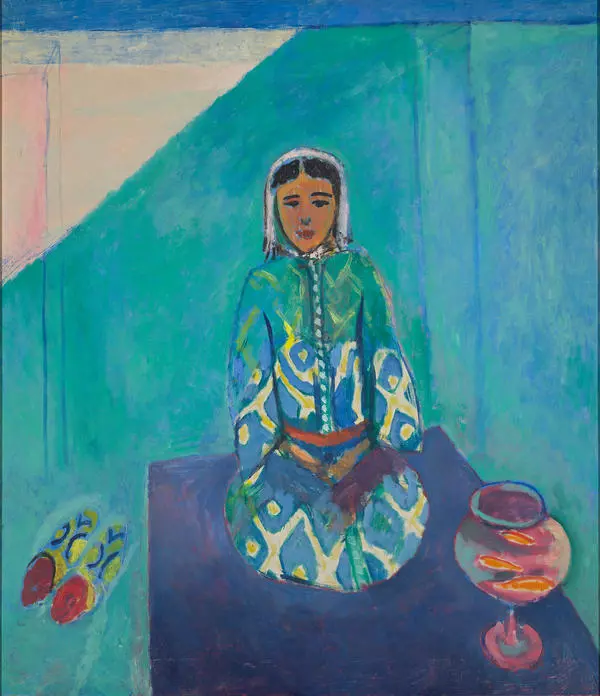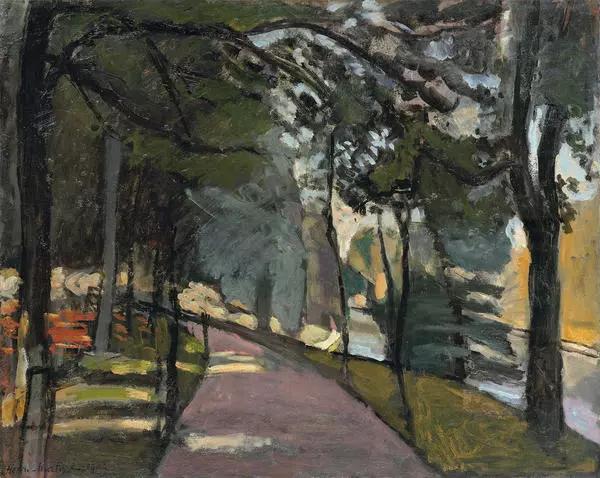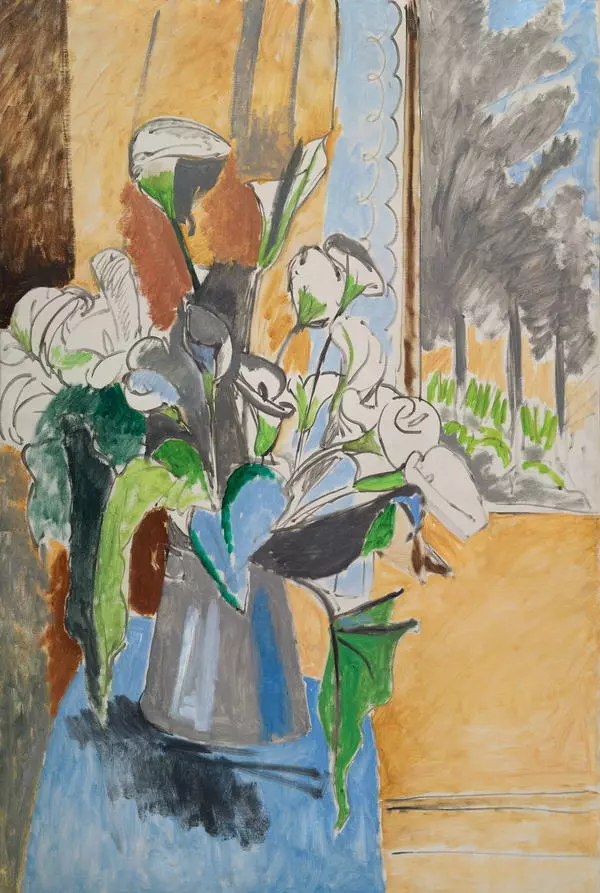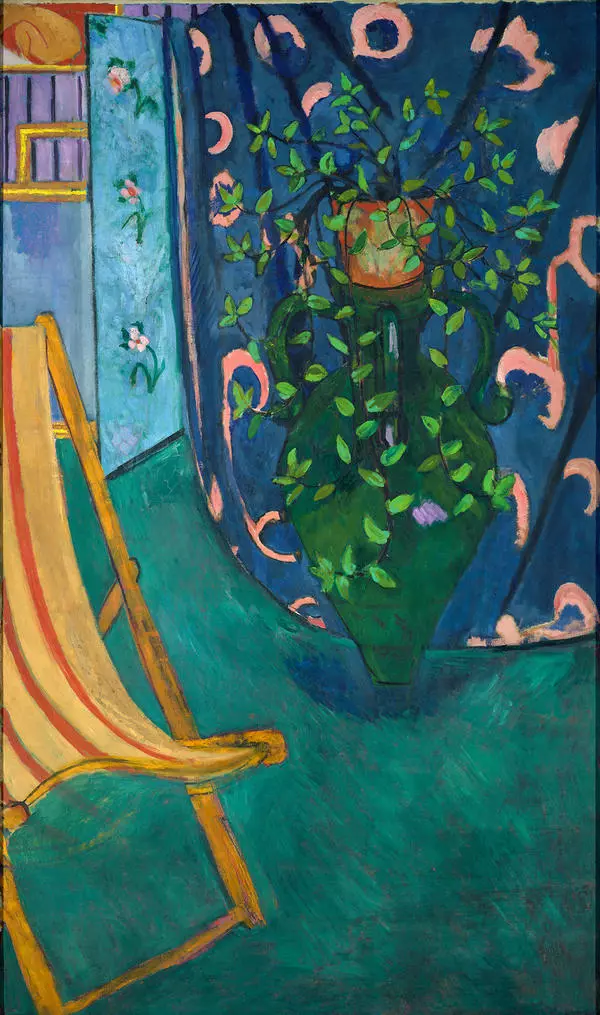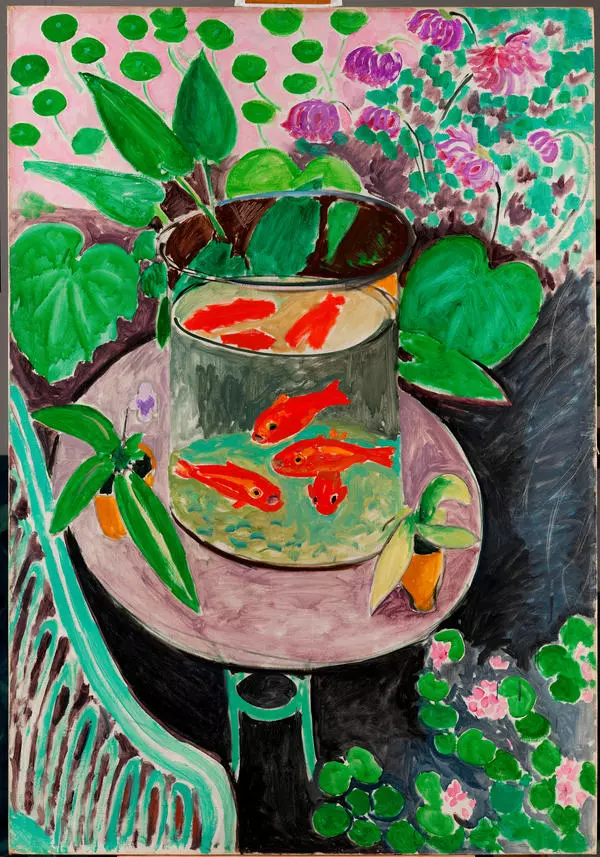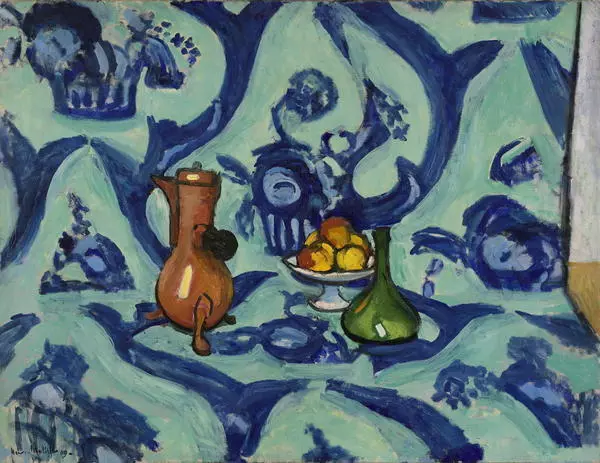In 1896 Henry Matisse discovered the newest trends in French painting. He was influenced by impressionists when he painted “Corsican Landscape. Olive Trees” during his journey to Corsica in 1898. The artist switched over to a brighter palette with light-hued colors. His staccato strokes resemble a manner of Signac, whose art definitely influenced Matisse at that time. Matisse’s palette has a certain decorative value, which shows that he was familiar with Gaugin’s principles of art. Matisse works in almost a sketch-like manner, pasting in contrasting color spots under the blinding Mediterranean sun and erasing some details in his renditions of objects. Van Gogh’s influence is also very obvious, as olives were one of the painter’s favorite motifs. In their “fluid” outlines he felt the potential for visualizing the powerful concept of the “biological energy of growth.” The mood of Matisse’s artwork is far removed from Van Gogh’s generally tragic vision of life, but the assertive strokes and bright colors show his efforts to master the techniques of the great Dutch painter. Matisse’s impressions of Corsican nature are definitely evident in his choices of bright colors and ornate style. He highlights nature’s might by outlining the huge trunks of tress, clearly visualizing power and stability with their distinguished silhouettes. Matisse gave this painting as a gift to a friend from his youth, and later it was purchased by Lidia Delektorskaya, the artist’s model and secretary. The Pushkin State Museum received this painting as a gift from Lidia Delektorskaya’s collection.
Corsican Landscape. Olive Trees
Creation period
1898
Dimensions
38x46 cm
38х46
38х46
Technique
oil on canvas
Collection
Exhibition
8
Open in app#1
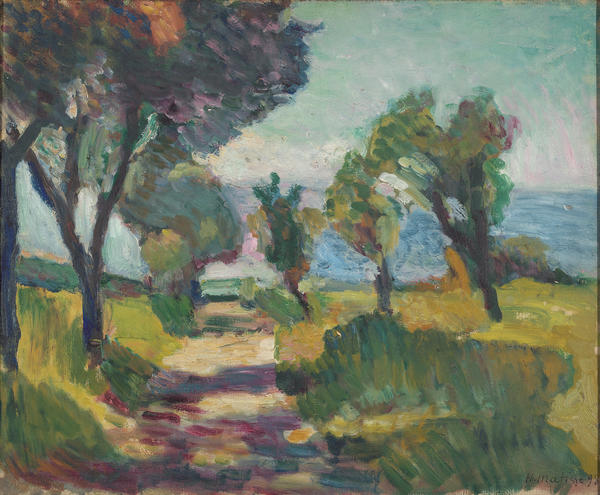
Henry Matisse
Corsican Landscape. Olive Trees
#2
read morehide
00:00
00:00
1x
Corsican Landscape. Olive Trees
Creation period
1898
Dimensions
38x46 cm
38х46
38х46
Technique
oil on canvas
Collection
Exhibition
8
Open in app
Share



